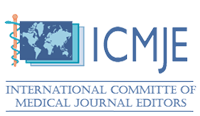К ВОПРОСУ ОЦЕНКИ ПОТЕНЦИАЛА РОСТА ОЖИДАЕМОЙ ПРОДОЛЖИТЕЛЬНОСТИ ЖИЗНИ НАСЕЛЕНИЯ В РЕЗУЛЬТАТЕ РЕАЛИЗАЦИИ КОМПЛЕКСНЫХ МЕРОПРИЯТИЙ (НА ПРИМЕРЕ СУБЪЕКТА РОССИЙСКОЙ ФЕДЕРАЦИИ)
Аннотация
Актуальность исследования продиктована вектором развития текущей государственной политики в РФ по улучшению условий социальной сферы, одним из ключевых показателей которой является ожидаемая продолжительность жизни при рождении (далее ОПЖ). В современных условиях поиск и апробация новых аналитических систем, способных к прогнозированию ОПЖ с учётом многофакторного влияния на данный показатель, сохраняет свою актуальность и своевременность. Целью настоящей работы являлось установление прогнозных оценок потенциала роста ОПЖ населения на примере одного из субъектов РФ с учётом комплекса разнородных факторов, оказывающих модифицирующее влияние на ОПЖ. Данная оценка осуществлялась с использованием моделирования причинно-следственных связей между показателями среды обитания, качества и образа жизни – детерминантами, определяющими популяционное здоровье. Используемая модель представляет собой совокупность алгебраических уравнений в виде факторного преобразования независимых переменных и искусственной нейронной сети и реализуется в 3 этапа: а) разработка базового сценария и расчет ОПЖ, б) разработка целевого сценария и расчет ОПЖ, в) вычисление потенциала роста ОПЖ, как разности между значениями, полученными на предыдущих этапах. Применение разработанной модели и 3-х этапного алгоритма позволило получить потенциал роста ОПЖ на примере одного субъекта РФ при сценарии единого изменения детерминант к 2024 году, который составил +1.24 года (453.0 дня) относительно базового сценария (фактического значения ОПЖ 2018 г.) и прогнозное значение ОПЖ – 70.47 года. Ранжирование отдельных групп показателей по их изолированному эффекту на ОПЖ показало, что наиболее значимыми группами детерминант являются социально-демографические показатели (2.6 года – 949.0 дня), показатели санитарно-эпидемиологического благополучия (1.75 года – 638.75 дня) и показатели образа жизни населения (1.41 года – 514.65 дня). Полученные результаты подтверждают превалирование влияния показателей социальной сферы на популяционное здоровье в виде ОПЖ на примере анализа изменения показателей одного из субъектов РФ. Научной новизной данной работы является исследование совокупного влияния разнородных факторов среды обитания и образа жизни на индикативный показатель популяционного здоровья (ОПЖ), представляющий собой сложную систему со свойствами эмерджентности, вариативности, противоположного влияния и адаптации.
Скачивания
Литература
References
Andreev E. M., Shkolnikov V. M. Svyaz' mezhdu urovnyami smertnosti i ekonomicheskogo razvitiya v Rossii i yeye regionakh [The relationship between mortality and economic development in Russia and its regions]. Demograficheskoe Obozrenie [Demographic Review], 2018, vol. 5, no. 1, pp. 6–24. https://doi.org/10.17323/demreview.v5i1.7707
Vishnevsky A. G., Andreev E. M., Timonin S. A. Mortality from cardiovascular diseases and life expectancy in Russia. Demograficheskoe Obozrenie [Demographic Review], 2017, vol. 4, no. 5, pp. 45-70. https://doi.org/10.17323/demreview.v4i5.8566
Kolosnitsyna M. G., Kossova T. V., Sheluntsova M. A. Faktory rosta ozhidayemoy prodolzhitel'nosti zhizni: klasternyy analiz po stranam mira [Factors of the life expectancy increase: country-level cluster analysis]. Demograficheskoe Obozrenie [Demographic Review], 2019, vol. 6, no. 1, pp. 124–150. https://doi.org/10.17323/DEMREVIEW.V6I1.9114
Kuznetsova P. O. Kureniye kak faktor sokrashcheniya ozhidayemoy prodolzhitel'nosti zhizni v Rossii [Smoking as a factor of reduced life expectancy in Russia. Demograficheskoe Obozrenie [Demographic Review], 2019, vol. 6, no. 3, pp. 31–57. https://doi.org/10.17323/demreview.v6i3.9854
Popova A., Zaitseva N. V., Onishchenko G. G., Kleyn S. V., Kir'yanov D. A., Glukhikh M. V. Sotsial'no-ekonomicheskiye determinanty i potentsial rosta ozhidayemoy prodolzhitel'nosti zhizni naseleniya Rossiyskoy Federatsii s uchetom regional'noy differentsiatsii [Social and economic determinants and potential for growth in life expectancy of the population in the Russian Federation taking into account regional differentiation]. Analiz Riska Zdorov’yu [Health Risk Analysis], 2020, no. 4, pp. 14–29. https://doi.org/10.21668/health.risk/2019.4.02
Ukaz Prezidenta Rossiyskoy Federatsii ot 09.10.2007 g. № 1351 Ob utverzhdenii Kontseptsii demograficheskoy politiki Rossiyskoy Federatsii na period do 2025 goda, 2007 g [Decree of the President of the Russian Federation from 09.10.2007 No. 1351 “On approval of the concept of demographic policy of the Russian Federation for the period up to 2025,” 2007]. URL: http://www.kremlin.ru/acts/bank/26299w
Ukaz Prezidenta Rossiyskoy Federatsii ot 21.07.2020 g. № 474 O natsional'nykh tselyakh razvitiya Rossiyskoy Federatsii na period do 2030 goda, 2020 g. [Decree of the President of the Russian Federation from 21.07.2020 No 474 “On the national development goals of the Russian Federation for the period up to 2030, 2020]. URL: http://www.kremlin.ru/acts/bank/45726
Cardona C., Bishai D. The slowing pace of life expectancy gains since 1950. BMC Public Health, 2018, vol. 18, pp. 151.
Crimmins EM, Preston SH Cohen B. International Differences in Mortality at Older Ages: Dimensions and Sources. Washington: National Academies Press, 2010. 428 p. https://doi.org/10.17226/12945
De Keijzer C., Agis D., Ambrós A., Arevalo G. The association of air pollution and greenness with mortality and life expectancy in Spain: A small-area study. Environment International, 2017, vol. 99, pp. 170–176. http://dx.doi.org/10.1016/j.envint.2016.11.009
Ebenstein A., Fan M., Greenstone M., He G., Zhou M. New evidence on the impact of sustained exposure to air pollution on life expectancy from China’s Huai river policy. Proceedings of the National Academy of Sciences of the United States of America, 2017, vol. 114, no. 39, pp. 10384–10389. https://doi.org/10.1073/pnas.1616784114
Hill T. D., Jorgenson A. K., Ore P., Balistreri K. S. Air quality and life expectancy in the United States: An analysis of the moderating effect of income inequality. SSM - Population Health, 2018, vol. 7, pp. 100346. http://dx.doi.org/10.1016/j.ssmph.2018.100346
Human Development Report 2020: The next frontier – Human development and the Anthropocene, 2020. URL: http://hdr.undp.org/sites/default/files/hdr2020_ru.pdf
Jayasinghe S. Conceptualising population health: From mechanistic thinking to complexity science. Emerging Themes in Epidemiology, 2011, vol. 8, no. 1, pp. 2. https://doi.org/10.1186/1742-7622-8-2
Lynch J., Smith G. D., Harper S., Hillemeier M., Ross N., Kaplan G. A., Wolfson M. Is income inequality a determinant of population health? Part 2. U.S. National and regional trends in income inequality and age- and cause-specific mortality. The Milbank Quarterly, 2004, vol. 82, no. 2, pp. 355–400. https://doi.org/10.1111/j.0887-378x.2004.00302.x
Lynch J., Smith G. D., Harper S., Hillemeier M., Ross N., Kaplan G. A., Wolfson M. Is income inequality a determinant of population health? Part 1. A systematic review. The Milbank Quarterly, 2004, vol. 82, no. 1, pp. 5–99. https://doi.org/10.1111/j.0887-378x.2004.00302.x
Mackenbach J. P., Stirbu I., Roskam A. J., Schaap M. M., Menvielle G., Leinsalu M., Kunst A. E. Socioeconomic inequalities in health in 22 European countries. The New England Journal of Medicine, 2008, vol. 358, no. 23, pp. 2468–2481. https://doi.org/10.1056/nejmsa0707519
Marmot M. The health gap: The challenge of an unequal world: The argument. International Journal of Epidemiology, 2017, vol. 46, no. 4, pp. 1312–1318. https://doi.org/10.1093/ije/dyx163
Omran A. R. The epidemiologic transition: A theory of the epidemiology of population change. 1971. The Milbank Quarterly, 2005, vol. 83, no. 4, pp. 731–757. https://doi.org/10.1111/j.1468-0009.2005.00398.x
Pope C. A. Epidemiology of fine particulate air pollution and human health: Biologic mechanisms and who’s at risk? Environmental Health Perspectives, 2000, vol. 108, no. 4, pp. 713–723. https://doi.org/10.1289/ehp.108-1637679
Preston S. H. The changing relation between mortality and level of economic development. International Journal of Epidemiology, 2007, vol. 36, no. 3, pp. 484–490. http://dx.doi.org/10.1093/ije/dym075
Rjoub H., Odugbesan J. A., Adebayo T. S., Wong W.-K. Investigating the causal relationships among carbon emissions, economic growth, and life expectancy in Turkey: Evidence from time and frequency domain causality techniques. Sustainability, 2021, vol. 13, no. 5, pp. 2924. http://dx.doi.org/10.3390/su13052924
Rutter H., Savona N., Glonti K., Bibby J., Cummins S., Finegood D. T., Greaves F., Harper L., Hawe P., Moore L., Petticrew M., Rehfuess E., Shiell A., Thomas J., White M. The need for a complex systems model of evidence for public health. Lancet, 2017, vol. 390, no. 10112, pp. 2602–2604. https://doi.org/10.1016/s0140-6736(17)31267-9
Smith J. P. Healthy bodies and thick wallets: The dual relation between health and economic status. The Journal of Economic Perspectives: A Journal of the American Economic Association, 1999, vol. 13, no. 2, pp. 144–166.
Stringhini S., Carmeli C., Jokela M., Avendaño M., Muennig P., Guida F., Ricceri F., D'Errico A., Barros H., Bochud M., Chadeau-Hyam M., Clavel-Chapelon F., Costa G., Delpierre C., Fraga S, Goldberg M., Giles G. G., Krogh V., Kelly-Irving M., Layte R., Lasserre A. M., Marmot M. G., Preisig M., Shipley M. J., Vollenweider P., Zins M., Kawachi I., Steptoe A., Mackenbach J. P., Vineis P., Kivimäki M. Socioeconomic status and the 25 × 25 risk factors as determinants of premature mortality: A multicohort study and meta-analysis of 1·7 million men and women. Lancet, 2017, vol. 389, no. 10075, pp. 32380–32387. https://doi.org/10.1016/s0140-6736(16)32380-7
Westman J., Wahlbeck K., Laursen T. M., Gissler M., Nordentoft M., Hällgren J., Arffman M., Ösby U. Mortality and life expectancy of people with alcohol use disorder in Denmark, Finland and Sweden. Acta Psychiatrica Scandinavica, 2015, vol. 131, no. 4, pp. 297–306. https://doi.org/10.1111/acps.12330
World Health Organization. Closing the gap in a generation: Healthy equity through action on the social determinants of health, 2008. URL: https://www.who.int/social_determinants/final_report/csdh_finalreport_2008.pdf
World Health Organization. World health statistics 2020: Monitoring health for the SDGs, sustainable development goals, 2020. URL: https://apps.who.int/iris/handle/10665/332070
Список литературы
Андреев Е. М., Школьников В. М. Связь между уровнями смертности и экономического развития в России и ее регионах // Демографическое обозрение. 2018. Т. 5. № 1. С. 6–24. https://doi.org/10.17323/demreview.v5i1.7707
Вишневский А. Андреев Е. Тимонин С. Mortality from cardiovascular diseases and life expectancy in Russia // Демографическое обозрение. 2017. Т. 4. № 5. С. 45-70. https://doi.org/10.17323/demreview.v4i5.8566
Колосницына М. Г., Коссова Т. В., Шелунцова М. А. Факторы роста ожидаемой продолжительности жизни: кластерный анализ по странам мира // Демографическое обозрение. 2019. Т. 6. № 1. С. 124–150. https://doi.org/10.17323/DEMREVIEW.V6I1.9114
Кузнецова П. О. Курение как фактор сокращения ожидаемой продолжительности жизни в России // Демографическое обозрение. 2019. Т. 6. № 3. С. 31–57. https://doi.org/10.17323/demreview.v6i3.9854
Социально-экономические детерминанты и потенциал роста ожидаемой продолжительности жизни населения Российской Федерации с учетом региональной дифференциации / Попова А., Зайцева Н. В., Онищенко Г. Г., Клейн С. В., Кирьянов Д. А., Глухих М. В. // Анализ риска здоровью. 2020. № 4. С. 14–29. https://doi.org/10.21668/health.risk/2019.4.02
Указ Президента Российской Федерации от 09.10.2007 г. № 1351 Об утверждении Концепции демографической политики Российской Федерации на период до 2025 года, 2007 г. URL: http://www.kremlin.ru/acts/bank/26299w
Указ Президента Российской Федерации от 21.07.2020 г. № 474 О национальных целях развития Российской Федерации на период до 2030 года, 2020 г. URL: http://www.kremlin.ru/acts/bank/45726
Cardona C., Bishai D. The slowing pace of life expectancy gains since 1950 // BMC Public Health, 2018, vol. 18, pp. 151.
Crimmins EM, Preston SH Cohen B. (2010) International differences in mortality at older ages: Dimensions and sources. Washington: National Academies Press, 2010. 428 p. https://doi.org/10.17226/12945
De Keijzer C., Agis D., Ambrós A., Arevalo G. The association of air pollution and greenness with mortality and life expectancy in Spain: A small-area study // Environment International, 2017, vol. 99, pp. 170–176. http://dx.doi.org/10.1016/j.envint.2016.11.009
Ebenstein A., Fan M., Greenstone M., He G., Zhou M. New evidence on the impact of sustained exposure to air pollution on life expectancy from China’s Huai river policy // Proceedings of the National Academy of Sciences of the United States of America, 2017, vol. 114, no. 39, pp. 10384–10389. https://doi.org/10.1073/pnas.1616784114
Hill T. D., Jorgenson A. K., Ore P., Balistreri K. S. Air quality and life expectancy in the United States: An analysis of the moderating effect of income inequality // SSM - Population Health, 2018, vol. 7, pp. 100346. http://dx.doi.org/10.1016/j.ssmph.2018.100346
Human Development Report 2020: The next frontier – Human development and the Anthropocene, 2020. URL: http://hdr.undp.org/sites/default/files/hdr2020_ru.pdf
Jayasinghe S. Conceptualising population health: From mechanistic thinking to complexity science // Emerging Themes in Epidemiology, 2011, vol. 8, no. 1, pp. 2. https://doi.org/10.1186/1742-7622-8-2
Lynch J., Smith G. D., Harper S., Hillemeier M., Ross N., Kaplan G. A., Wolfson M. Is income inequality a determinant of population health? Part 2. U.S. National and regional trends in income inequality and age- and cause-specific mortality // The Milbank Quarterly, 2004, vol. 82, no. 2, pp. 355–400. https://doi.org/10.1111/j.0887-378x.2004.00302.x
Lynch J., Smith G. D., Harper S., Hillemeier M., Ross N., Kaplan G. A., Wolfson M. Is income inequality a determinant of population health? Part 1. A systematic review // The Milbank Quarterly, 2004, vol. 82, no. 1, pp. 5–99. https://doi.org/10.1111/j.0887-378x.2004.00302.x
Mackenbach J. P., Stirbu I., Roskam A. J., Schaap M. M., Menvielle G., Leinsalu M., Kunst A. E. Socioeconomic inequalities in health in 22 European countries // The New England Journal of Medicine, 2008, vol. 358, no. 23, pp. 2468–2481. https://doi.org/10.1056/nejmsa0707519
Marmot M. The health gap: The challenge of an unequal world: The argument // International Journal of Epidemiology, 2017, vol. 46, no. 4, pp. 1312–1318. https://doi.org/10.1093/ije/dyx163
Omran A. R. The epidemiologic transition: A theory of the epidemiology of population change. 1971 // The Milbank Quarterly, 2005, vol. 83, no. 4, pp. 731–757. https://doi.org/10.1111/j.1468-0009.2005.00398.x
Pope C. A. Epidemiology of fine particulate air pollution and human health: Biologic mechanisms and who’s at risk? // Environmental Health Perspectives, 2000, vol. 108, no. 4, pp. 713–723. https://doi.org/10.1289/ehp.108-1637679
Preston S. H. The changing relation between mortality and level of economic development // International Journal of Epidemiology, 2007, vol. 36, no. 3, pp. 484–490. http://dx.doi.org/10.1093/ije/dym075
Rjoub H., Odugbesan J. A., Adebayo T. S., Wong W.-K. Investigating the causal relationships among carbon emissions, economic growth, and life expectancy in Turkey: Evidence from time and frequency domain causality techniques // Sustainability, 2021, vol. 13, no. 5, pp. 2924. http://dx.doi.org/10.3390/su13052924
Rutter H., Savona N., Glonti K., Bibby J., Cummins S., Finegood D. T., Greaves F., Harper L., Hawe P., Moore L., Petticrew M., Rehfuess E., Shiell A., Thomas J., White M. The need for a complex systems model of evidence for public health // Lancet, 2017, vol. 390, no. 10112, pp. 2602–2604. https://doi.org/10.1016/s0140-6736(17)31267-9
Smith J. P. Healthy bodies and thick wallets: The dual relation between health and economic status // The Journal of Economic Perspectives: A Journal of the American Economic Association, 1999, vol. 13, no. 2, pp. 144–166.
Stringhini S., Carmeli C., Jokela M., Avendaño M., Muennig P., Guida F., Ricceri F., D'Errico A., Barros H., Bochud M., Chadeau-Hyam M., Clavel-Chapelon F., Costa G., Delpierre C., Fraga S, Goldberg M., Giles G. G., Krogh V., Kelly-Irving M., Layte R., Lasserre A. M., Marmot M. G., Preisig M., Shipley M. J., Vollenweider P., Zins M., Kawachi I., Steptoe A., Mackenbach J. P., Vineis P., Kivimäki M. Socioeconomic status and the 25 × 25 risk factors as determinants of premature mortality: A multicohort study and meta-analysis of 1·7 million men and women // Lancet, 2017, vol. 389, no. 10075, pp. 32380–32387. https://doi.org/10.1016/s0140-6736(16)32380-7
Westman J., Wahlbeck K., Laursen T. M., Gissler M., Nordentoft M., Hällgren J., Arffman M., Ösby U. Mortality and life expectancy of people with alcohol use disorder in Denmark, Finland and Sweden // Acta Psychiatrica Scandinavica, 2015, vol. 131, no. 4, pp. 297–306. https://doi.org/10.1111/acps.12330
World Health Organization. Closing the gap in a generation: Healthy equity through action on the social determinants of health, 2008. URL: https://www.who.int/social_determinants/final_report/csdh_finalreport_2008.pdf
World Health Organization. World health statistics 2020: Monitoring health for the SDGs, sustainable development goals, 2020. URL: https://apps.who.int/iris/handle/10665/332070
Просмотров аннотации: 129 Загрузок PDF: 104
Copyright (c) 2023 Nina V. Zaitseva, Svetlana V. Kleyn, Maxim V. Glukhikh, Marat R. Kamaltdinov

Это произведение доступно по лицензии Creative Commons «Attribution-NonCommercial-NoDerivatives» («Атрибуция — Некоммерческое использование — Без производных произведений») 4.0 Всемирная.






















































